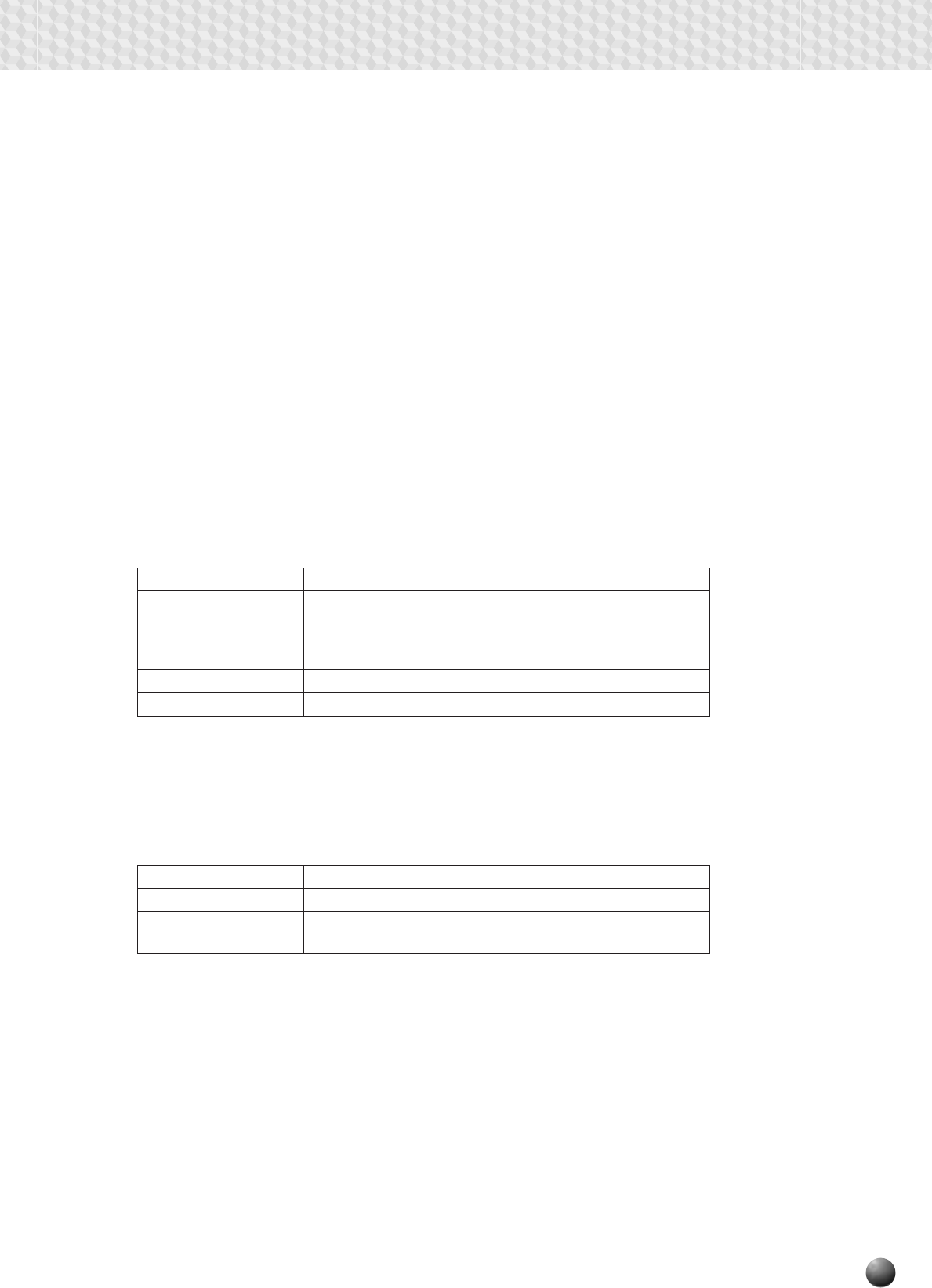
87
MIDI Functions
MIDI is an acronym that stands for Musical Instrument Digital Interface, which
allows electronic musical instruments to communicate with each other, by sending
and receiving compatible Note, Control Change, Program Change and various other
types of MIDI data, or messages.
The PSR-530 can control a MIDI device by transmitting note related data and
various types of controller data. The PSR-530 can be controlled by the incoming MIDI
messages which automatically determine tone generator mode, select MIDI channels,
voices and effects, change parameter values and of course play the voices specified for
the various parts.
MIDI messages can be divided into two groups: Channel messages and System
messages. Below is an explanation of the various types of MIDI messages which the
PSR-530 can receive/transmit.
● System Messages
This is data that is used in common by the entire MIDI system. System messages
include messages like Exclusive Messages that transmit data unique to each
instrument manufacturer and Realtime Messages that control the MIDI device.
The messages transmitted/received by the PSR-530 are shown in the MIDI Data
Format and MIDI Implementation Chart on pages 110 and 122.
Message Name PSR-530 Operation/Panel Setting
Note ON/OFF Messages which are generated when the keyboard is played.
Each message includes a specific note number which corre-
sponds to the key which is pressed, plus a velocity value based
on how hard the key is stuck.
Program Change Voice setting (control change bank select MSB/LSB setting)
Control Change Revoice setting(volume, pan pot, etc.)
Message Name PSR-530 Operation/Panel Setting
Exclusive Message Reverb/chorus/DSP settings, etc.
Realtime Messages Clock setting
Start/stop operation
● Channel Messages
The PSR-530 is an electronic instrument that can handle 16 channels. This is
usually expressed as “it can play 16 instruments at the same time.” Channel
messages transmit information such as Note ON/OFF, Program Change, for each
of the 16 channels.


















